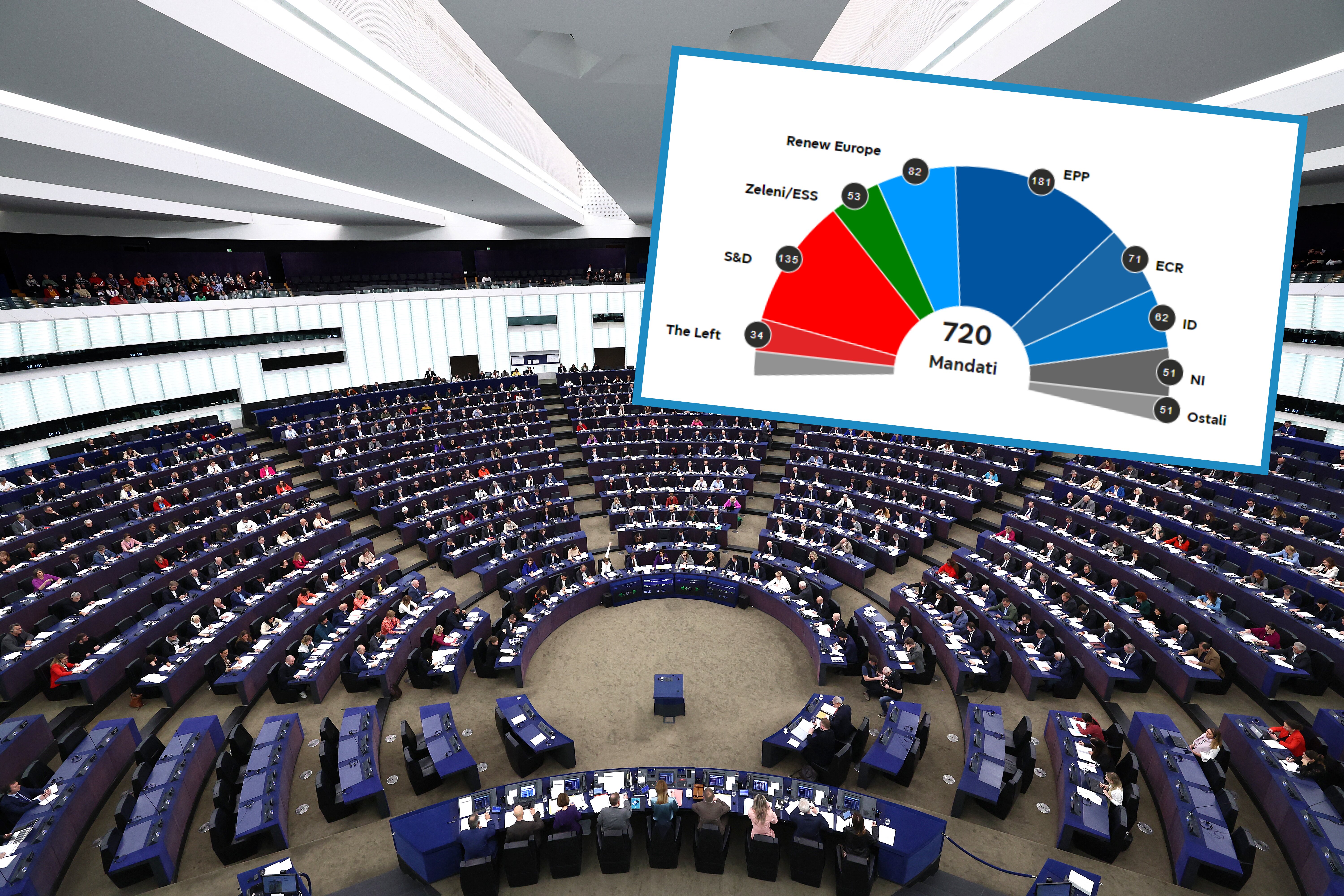
A moderate increase for the centre-right, a sharp rise for the far-right and a sharp decline for the liberals and the Greens are the main features of the European elections. This is according to an estimate of the future composition of the European Parliament based on exit polls.
According to the estimate, which is based on exit polls from 11 and pre-election polls from 16 member countries, the European People's Party (EPP), which unites centre-right parties, will have 181 MEPs, five more than in the outgoing EP.
The Progressive Alliance of Socialists and Democrats (S&D) remains the second largest group with 135 MEPs, four fewer.
The Liberals (Renew) have lost 20 seats and are expected to have 82 MEPs instead of the previous 102.
These three groups, which are considered the most important pro-European forces, have won a total of 398 seats, compared to 417 in the outgoing EP. The outgoing EP has 705 members and the new one will have 720.
The Greens now have 18 fewer seats than in the old EP
The Greens experienced a significant drop and are estimated to have won 53 seats, 18 fewer than in the outgoing EP. The Greens are also considered very pro-European, but have often voted against the majority of the three main parties, which have criticised them as unreliable partners.
The far-right Identity and Democracy (ID) group is expected to have 62 MEPs, 13 more than in the outgoing EP. However, the far-right's success is even greater if the results of the Alternative for Germany (AfD), which was recently expelled from the ID and won 16 seats in the last elections, are taken into account.
The Group of the Left, which belongs to the far-left spectrum, won 34 seats, three fewer than before.
There are 51 non-attached MEPs who do not belong to a political group, 11 fewer than in the outgoing EP.
New parties that previously did not belong to a political group are estimated to have won 51 seats.
Kakvo je tvoje mišljenje o ovome?
Pridruži se raspravi ili pročitaj komentare



 Srbija
Srbija
 Bosna i Hercegovina
Bosna i Hercegovina
 Slovenija
Slovenija







